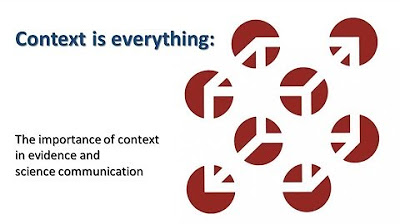Why did some people see a gold and white dress? | Our Brain
Summary
TLDRThis video explores how our brains interpret visual information through predictive perception, using illusions like the checkerboard and the viral dress debate as examples. It explains how we perceive colors differently due to factors like cast shadows and color constancy. The dress illusion, in particular, highlights how individual perception is shaped by the brain's prediction of light conditions, leading to debates over whether the dress is black and blue or white and gold. Ultimately, the video reveals that our brains create a personalized version of reality based on past experiences and environmental cues.
Takeaways
- 😀 The checkerboard illusion shows two patches that appear to be different shades of grey, but they are actually the same color.
- 😀 Our brain perceives differences in shades due to the knowledge that objects in shadow are darker, a concept tied to predictive perception.
- 😀 Predictive perception is how our brain compensates for visual cues, such as shadows, in order to create a consistent representation of the world.
- 😀 The viral phenomenon of 'the dress' in 2015 demonstrated how people disagree on its color, with some perceiving it as black and blue and others as white and gold.
- 😀 The color perception of the dress depends on how the brain interprets the lighting conditions, particularly whether it perceives the dress to be in shade or under direct sunlight.
- 😀 The dress was actually blue and black, but color constancy, a process where the brain adjusts colors to account for lighting, causes different perceptions.
- 😀 Color constancy helps our brain maintain a stable perception of colors despite varying lighting conditions.
- 😀 People experience color constancy differently, which explains why different people perceive the dress as different colors.
- 😀 The illusions in both the checkerboard and the dress provide evidence of how our brain constructs a personalized version of reality.
- 😀 Our brain is constantly predicting what we will experience next based on our past experiences, shaping our current perception of the world.
Q & A
What illusion is discussed in the transcript?
-The illusion discussed is that two patches on a checkerboard appear to be different shades of grey, but in fact, they are exactly the same shade.
Why do the two grey patches on the checkerboard appear to be different shades?
-The brain uses the knowledge that shadows darken surfaces, so it compensates for the perceived shadow and interprets the patches as different shades, even though they are the same.
What does the checkerboard illusion demonstrate about the brain's function?
-It demonstrates how the brain relies on predictive perception, using prior knowledge to interpret and predict visual information, even if that leads to an illusion.
What viral phenomenon is mentioned in the transcript?
-The viral phenomenon mentioned is the 'dress' that sparked a debate on whether it was black and blue or white and gold.
Why couldn't people agree on the color of the dress?
-People couldn't agree on the color of the dress because their brains interpreted the lighting conditions differently, which affected how they perceived the color.
What determines whether people see the dress as black and blue or white and gold?
-If people perceive the dress to be in the shade, they see it as black and blue, but if they think it is under direct sunlight, they see it as white and gold.
What is the actual color of the dress?
-The dress is actually blue and black.
What process is responsible for this kind of optical illusion?
-The process responsible is called 'color constancy,' which helps the brain maintain consistent color perception despite changes in lighting conditions.
What was learned about color constancy after the dress incident?
-It was learned that the process of color constancy happens slightly differently for different people, which explains the varying perceptions of the dress's color.
How do these kinds of illusions provide evidence of how the brain works?
-These illusions provide evidence that the brain is constantly constructing consciousness by making predictions based on past experiences, creating a personalized version of reality.
Outlines

Этот раздел доступен только подписчикам платных тарифов. Пожалуйста, перейдите на платный тариф для доступа.
Перейти на платный тарифMindmap

Этот раздел доступен только подписчикам платных тарифов. Пожалуйста, перейдите на платный тариф для доступа.
Перейти на платный тарифKeywords

Этот раздел доступен только подписчикам платных тарифов. Пожалуйста, перейдите на платный тариф для доступа.
Перейти на платный тарифHighlights

Этот раздел доступен только подписчикам платных тарифов. Пожалуйста, перейдите на платный тариф для доступа.
Перейти на платный тарифTranscripts

Этот раздел доступен только подписчикам платных тарифов. Пожалуйста, перейдите на платный тариф для доступа.
Перейти на платный тарифПосмотреть больше похожих видео

Brain Games- Autokinetic Images

The Gestalt Principles

The Unbelievable Science of How We Read

Seeing the world as it isn't | Daniel Simons | TEDxUIUC

Imperfect Perception: Illusions, Gestalt Principles of Grouping, and Language Relativism

Context is everything: The importance of context in evidence and science communication
5.0 / 5 (0 votes)
